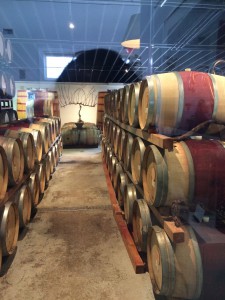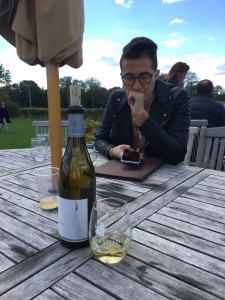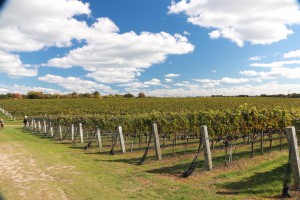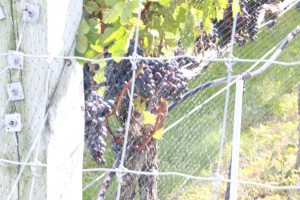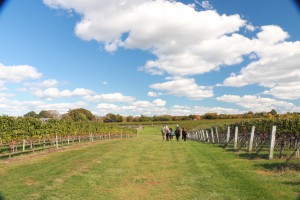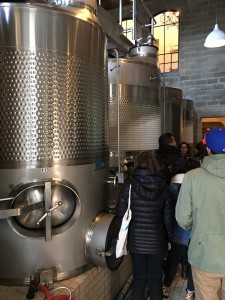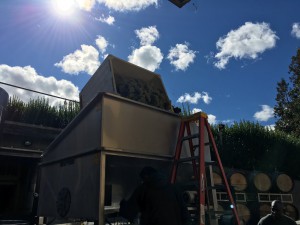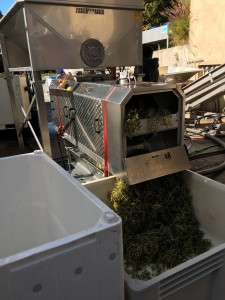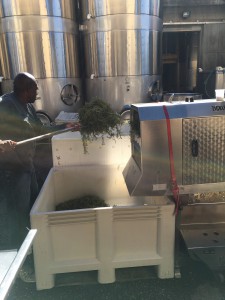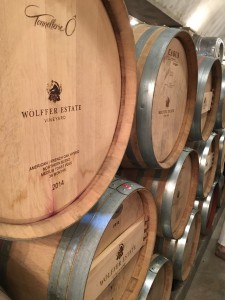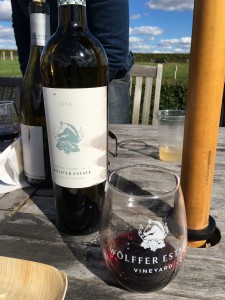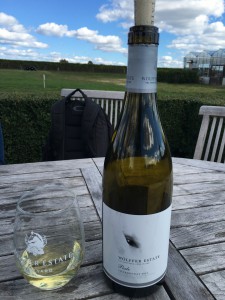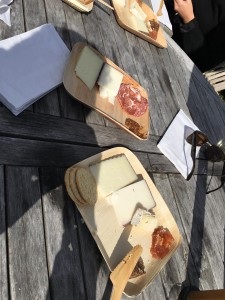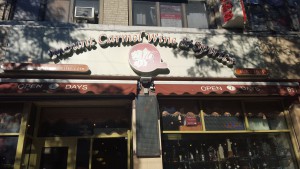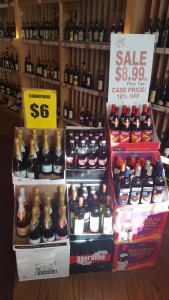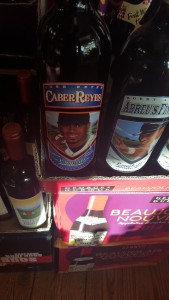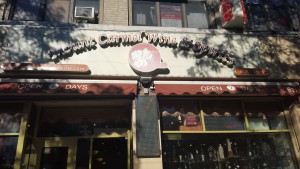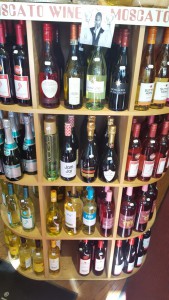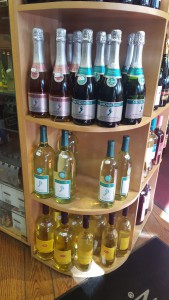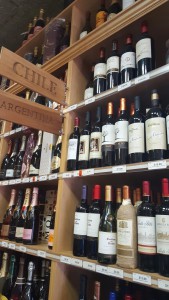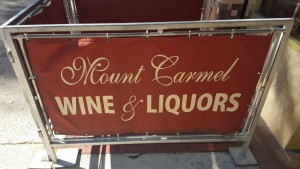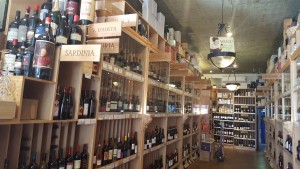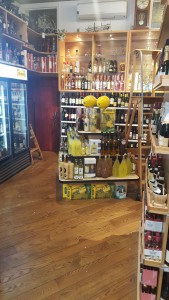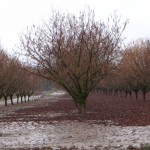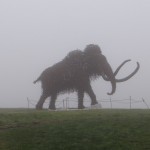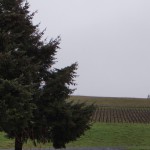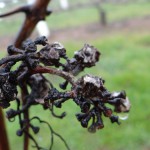At first choosing a vineyard to visit was a little difficult to round up until two other classmates and I found a well-known vineyard in upstate called Shinn Estate Vineyards and Farmhouse an ava of the New York region. This place is located in upstate New York and was not till the early 2000’s when Barbara and her husband David decided to move from California to New York and begin their life as winemakers. Knowing that they are originally from California tells a lot about their way of looking at life with an environment conservation mentality.
Before arriving to the vineyard I did a little research about their practices of wine making and one thing that Barbara feels very strong about and comes up in both her website and articles written is that they practice sustainable farming (Shinn estate vineyard and farmhouse, 2015). No harsh chemicals are used when growing the grapes or maintaining the soil and vines health (Shinn estate vineyard and farmhouse, 2015). One thing she mentioned as we did the vineyard walk was that as time has passed from when they first started growing grapes not only has she noticed a pattern of needing to irrigate more throughout the beginning of the season but how the colors of the leaves change now earlier in September than before. Other winemakers around her have asked her why she doesn’t use nitrogen to enhance the green leaves and keep them like that for longer but she responds saying how nature has a mind of its own you don’t want to throw a harsh chemical just to make it look better then have a bad influence on your soil and grape taste. Other practices she invokes within her vineyard are organic farming, biodynamic practices, and perma culture.
While doing the vineyard walk we were a little upset that we were in the middle of harvesting and all the grapes had been picked except a few that were not ripe at the moment of grape picking. In this location they grow red grapes such as merlot, cabernet sauvignon, cabernet franc, malbec, and petite verdo. For white grapes they grow sauvignon blanc, Semillon, pinot blanc, chardonnay and Riesling. Barbara also mentioned that their soil could be related to soils in France Boudreaux.
When walking through the vineyard we were able to find a cluster of grapes that were left behind and lucky they were chardonnay. Before tasting them she informed us about the visual aspect of the grape. As you first look at it they’re dull but when you rub them it gets shinny. What rubbed off when it got shinny was the natural yeast of the grape, which helps enhancing the flavor of the grape during the fermentation process.
A complimentary wine wasting was also part of our vineyard walk that was not as good as I had intended it to be. Not only did our server not know what she was speaking about but the taste for the whites were not pleasing. We had four choices, for mine I started with their Chardonnay, which had buttery notes and I’m sorry, but butter is not a taste I would intentionally drink which is something unique for their wine since it’s a first for me to try a chardonnay as that one. Then I followed with the fruit fruit sauvignon blanc thinking it was going to be better but it was so flat that I could not even identify the tasting notes within. I finally gave up on whites and tried their red blend called nine barrels and tasted pretty nice. Definitely tasted the oak, which it was fermented in, and red berries undertone. My last taste was their merlot and again tasted very delightful.
The trip to this vineyard was very insightful and pleasing. The staff was very welcoming as well as attentive to us coming over from a hospitality program. After visiting this estate I would definitely love to enjoy what others have to offer.
Bibliography
Shinn estate vineyard and farmhouse. (2015, december 1). shinn estate vineyard and farmhouse. Retrieved december 1, 2015, from shinn estate vineyard and farmhouse: http://shinnestatevineyards.com
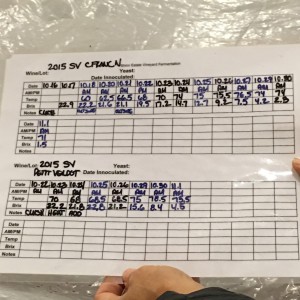
On every oak cask or cart that holds gapes has to contain this sheet showing whats in it, when it was last checked, and temperatures

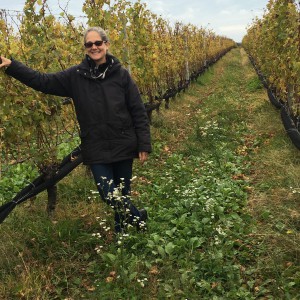
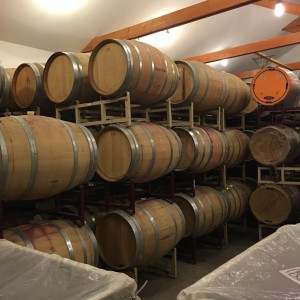
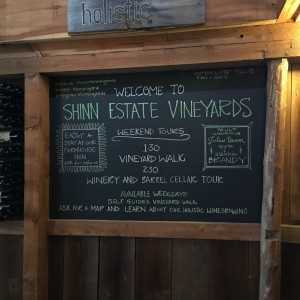
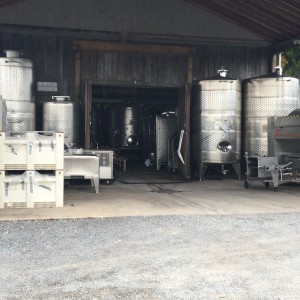
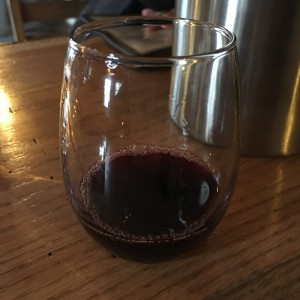
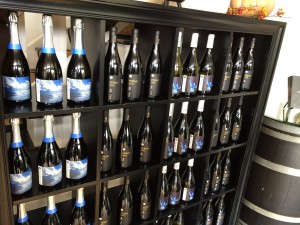 with a 2013 vintage.
with a 2013 vintage.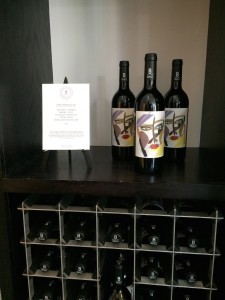 This is the wine that I purchased described as red fruit and berry flavors. By the way it was really good.
This is the wine that I purchased described as red fruit and berry flavors. By the way it was really good.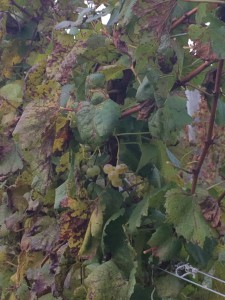 These were the only grapes that I was able to catch a picture of.
These were the only grapes that I was able to catch a picture of.